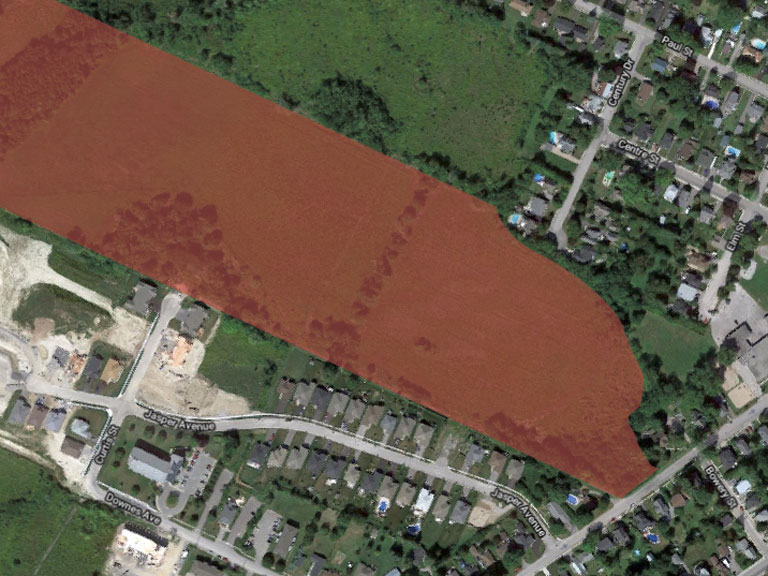County News
Time’s up

Ruling takes the municipality out of 21 Barker Street decision
The County learned late last week there is a cost to slow-walking a planning application through its processes—it will be removed from the decision-making process. On Thursday, the Local Planning Appeal Tribunal (LPAT) ruled that the municipality had failed, or neglected, to make a decision on a draft plan of subdivision for a residential development project in Picton. The Tribunal concluded that the development aligned with good planning principles and approved the rezoning and plan of subdivision— substituting its authority over the municipality’s discretion.
The proponent is a numbered company and wants to develop 74 single-detached lots, 52 townhouse units, six triplexes and a 140-unit apartment block adding to the northward expansion of Picton.
The project known as 21 Barker Street is situated on 13 hectares north of the former Queen Elizabeth Public School. Stretching from Barker Street north to the Millennium Trail, the project seeks to extend the new residential neighbourhood of Jasper Avenue northeast, with Century Avenue and Curtis Street as the connecting arteries.
The developer filed its applications for this project in July 2017. The package included a planning justification report, a functional servicing and stormwater management report, a hydrogeological and geotechnical report, a phase 1 and 2 environmental site assessment, an environmental impact study and an archaeological study. The proponent’s consultant also produced a draft plan of subdivision.
The neighbours didn’t like the project. They especially didn’t like the idea of an apartment complex. Too dense. Too big. Too close to Barker Street. Incompatible with the neighbourhood.
Neighbours believe the developer should have consulted with their group to rework the proposal to address their objections. They hired another planning consultant to draw up an alternative design concept plan relocating the apartment block to the back of the property, turning up the pressure on the developer.
If the County’s planning department was hoping time would force a compromise, it didn’t work. Instead, the developer appealed to the LPAT. And won. Taking the County out of the decision. Spending municipal dollars on legal fees on a losing cause.
From the Tribunal’s ruling: “The planned development of residential units of varying tenures and ranges of affordability and the creation of more housing opportunities aligns with the policy directives established by the Provincial and local planning regimes. The Tribunal is satisfied that the proposed Plan of Subdivision, subject to the fulfillment of Conditions of Draft Plan of Subdivision, aligns with the principles of good land use planning and is in the public interest.”
The ruling is a timely reminder that local planning regimes operate within a tightly constrained set of rules, principles and timelines established by the province. Neighbours and their council representatives may delay or slow down a development, but if the plan meets the tests of ‘good land use planning’, they can’t block it. Nor can they run out the clock.

Comments (0)